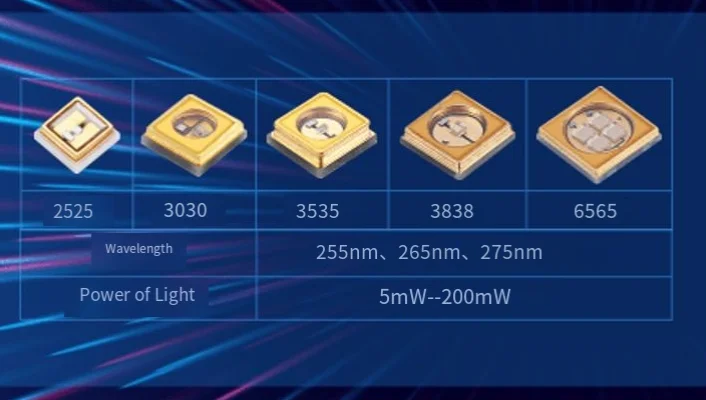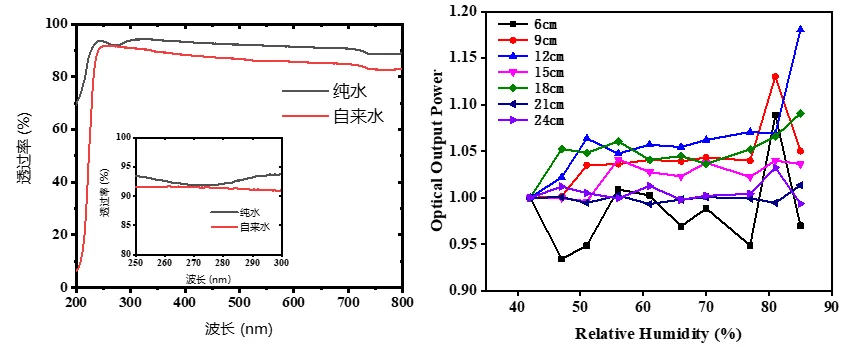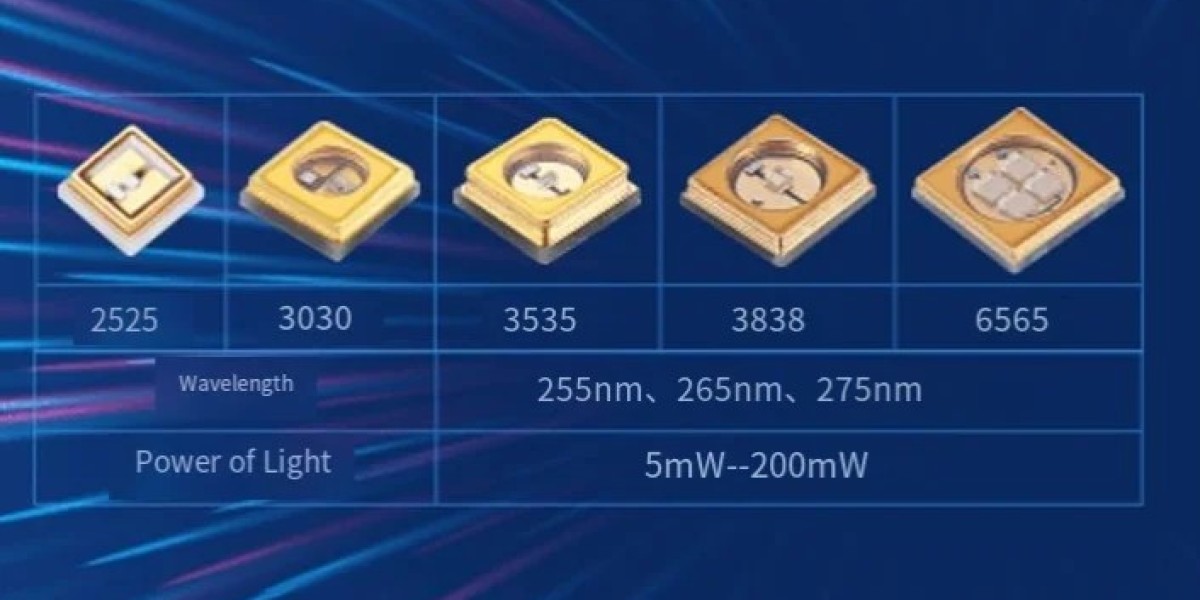
What is the effective irradiation distance of deep ultraviolet UVC-LED?
The effective irradiation distance mainly depends on the definition of "effective" and the performance of the light source used. Since each bacteria or virus has a corresponding lethal dose (see "Usually Used Ultraviolet Germicidal Irradiation Dosage Comparison Table" ), whether it is effective at a certain distance depends on whether the ultraviolet radiation intensity at that distance reaches this lethal dose. That is to say:
(1) If the defined sterilization rate standard is low and the required lethal dose is small, then the corresponding effective distance will become longer;
(2) If the light power of the lamp is high, the irradiation intensity at the same distance will be increased, so the equivalent effective irradiation distance can be farther;
(3) Similarly, if the sterilization time is extended, the cumulative irradiation dose will be higher, and bacteria and viruses in more distant places can be killed.
How far does deep ultraviolet UVC-LED travel in water?

Pure water and tap water both show good transmission characteristics for light with wavelengths between 250 and 800 nm. The transmittance at 5 mm thickness is above 80%. When the wavelength is shorter than 250 nm, the light absorption rate of both increases rapidly. In particular, tap water absorbs light <250 nm more strongly. The attenuation at 2.4 cm is 70%, the attenuation at 8.5 cm is 30%, and the attenuation at 16.3 cm is 10%.
Further extending the topic of effective distance, how far can UVC ultraviolet rays penetrate in water? Everything still comes back to the concept of bond energy. In water molecules, the bond energy of the HO bond is 485kJ/mol, corresponding to 4.98eV, which is about 249nm. Therefore, when testing the transmission spectrum of pure water, the absorption edge is measured to begin to decline at around 249nm. Based on this data, it can be said that normal tap water with relatively few impurities does not strongly absorb 275 nm UVC -LEDs, and ultraviolet sterilization devices based on the UVC sterilization principle can sterilize at a very long distance.
The most important consideration should be the rapid divergence of light during propagation, which leads to a sharp drop in far-end intensity. Hemispherical small-angle packaging is actually very common in the UVA industry, and the same applies to UVC packaging. Small-angle light emission can allow UVC to propagate farther, which is very suitable for manufacturers such as water cups, long water tanks, and over-flow water sterilization devices.
High ambient humidity does not cause significant absorption of UVC, which means that even in a sauna, UVC ultraviolet rays can be used for real-time sterilization.
What is the effective sterilization range of deep ultraviolet UVC-LED?
When it comes to the effective sterilization range, it is also based on the concept of dose. Unfortunately, for a point-emitting light source, the intensity distribution of the irradiated surface of the plane is a peak shape similar to the Gaussian distribution, and the intensity difference between the center and the edge can be several times. If the customer is asking this question rigorously, we should perform more accurate optical simulation and calculate the intensity distribution at various points on the plane. The simulation may not be accurate enough, but it provides a qualitative reference for our solution design. The irradiated surface is not uniform, and the simulation tool can calculate it more clearly.
When defining the luminous angle of the lamp bead, the angle of half the peak intensity is used. It is recommended that we also define the position of half the peak intensity on the plane as the effective range when designing the solution, and the dose calculation is also based on the half-height position.
Because the LED light pattern is spherical, the intensity distribution uniformity is very different at close distances and far distances. At 20cm, the effective irradiation range accounts for a larger proportion of the entire irradiated surface.








